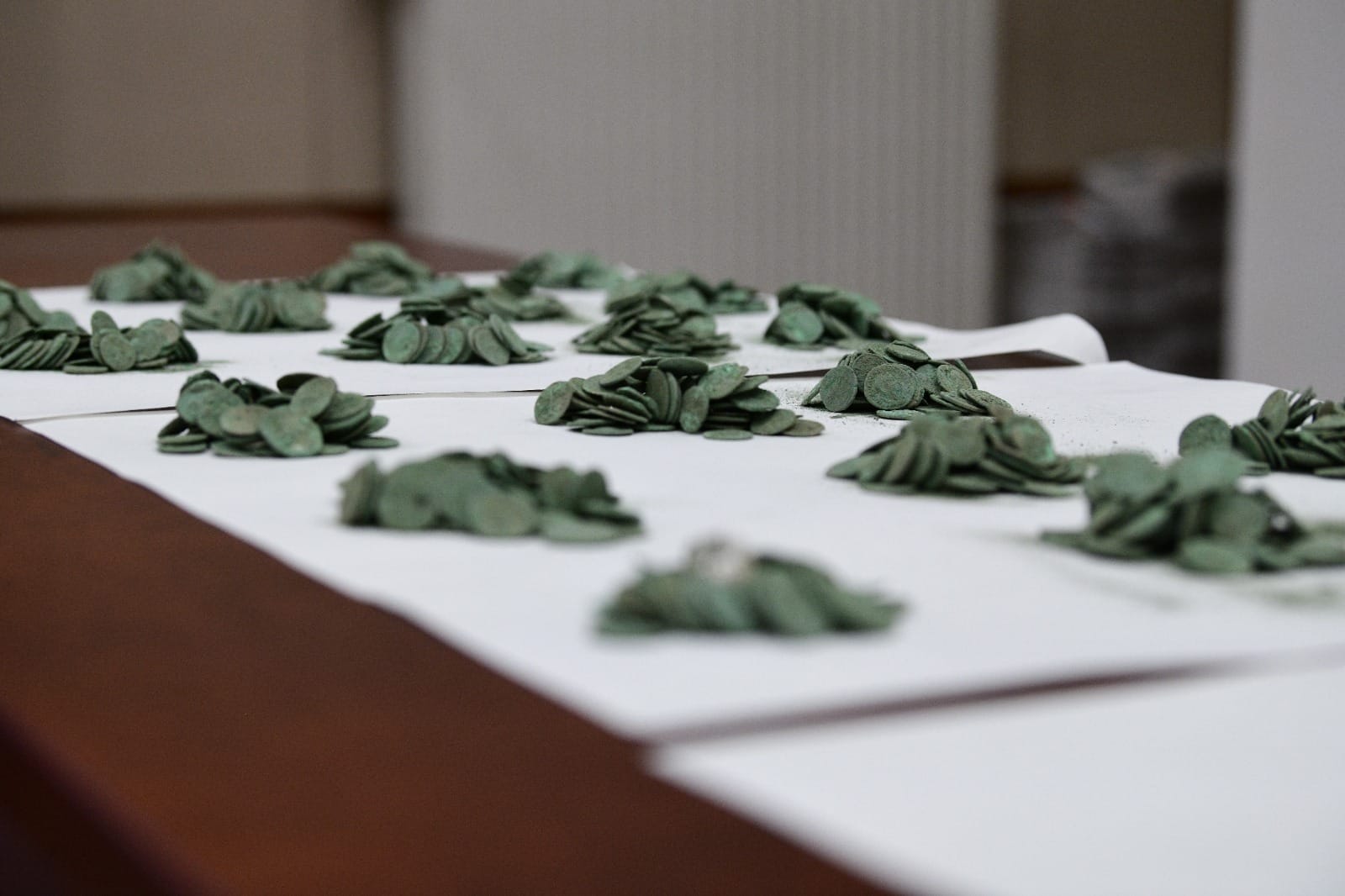Krásný pohled, přímo to chytá za srdcev idět takovýhle depůtek římánků pěkně pohromadě a nemusetje roky vyzobávat z políčka po jednom ,ovšem tohle čistit,kdoto zná a zažil, ví cotoje za fušku, tuhle zelenou krustu dosta tpryč, zvláště z písmenen na opisech, ale pokud půjde většinou o denáry z 1. a 2. stol. n. l. ty jsou ještě z kvalitního A g a něco drsnější kyselé chemie při čištění snesou,na rozdíl od mědí šizených antoniniánů ze 3. stol n.l., které se div nerozpdají a v depotu by asi skončiy jako neděitelná zelená hrouda
Detectorist discovers 1,700-year-old hoard of Roman silver coins
Categories: Minting - Numismatics , Treasures , Nálezy nejenom s detektorem kovů ve východní Evropě
An amateur prospector with a metal detector came across a unique coin hoard near the town of Padea in the Romanian district of Dolj, about 150 km west of Bucharest on the Romanian-Bulgarian border. The hoard contained 1,168 Roman silver coins dating from the third century, when the area was wracked by heavy fighting.
Experts say it is the largest coin collection discovered in the region in the last 60 years. It was deposited in the third century, when a series of conflicts were at their height. Today's Romania was known as Dacia in ancient times, primarily inhabited by Dacians. At that time, society was divided into the upper classes - the priests and nobility - and the lower classes - soldiers, artisans and farmers. The Dacians and Romans competed with each other from 100 BC until the first century AD.
After protracted and repeated conflicts, the Romans achieved a decisive victory in 88 AD, making Dacia a frontier region of the Roman Empire. The Dolj region was part of Dacia's close borders, where the situation was constantly tense and permanently insecure, among other things due to a series of barbarian invasions. The Romans therefore built a system of fortresses, watchtowers and fortifications across the region as part of a system of border defence. Sometime between 270 and 275 AD, Roman soldiers left Dacia on the orders of the Emperor Aurelian to defend other territories that were more important to Rome at the time.
"The Roman coins found here were quite commonly used," said Radu Dumitrescu, an expert from the Oltenia Museum. "They were probably deposited during the devastating conflicts of the third century," he said, adding that it may have been during this turbulent time that someone deposited the coins. Perhaps soldiers serving on the border or locals who deposited them in fear of another impending conflict.
Experts will now clean the coins and determine their value. "The value of the archaeological discovery will be determined after a thorough procedure. At the end of the evaluation, we will take steps to preserve the entire treasure," added Dolj County Council Chairman Cosmin Vasile.
Roman Němec
Sources: newsrnd.com, jurnaldeoltenia.ro, miamiherald.com




The article is included in categories:



